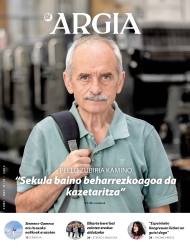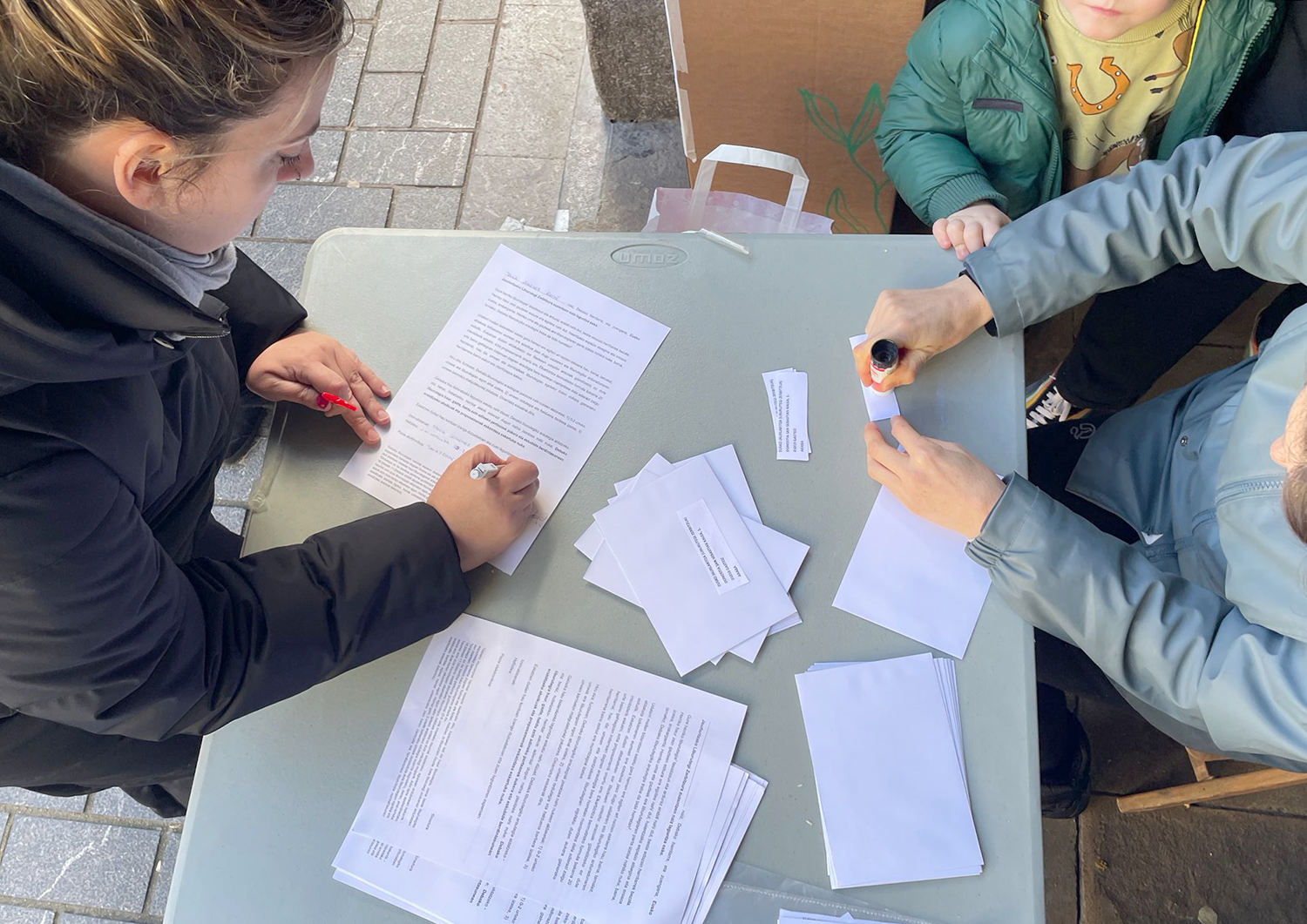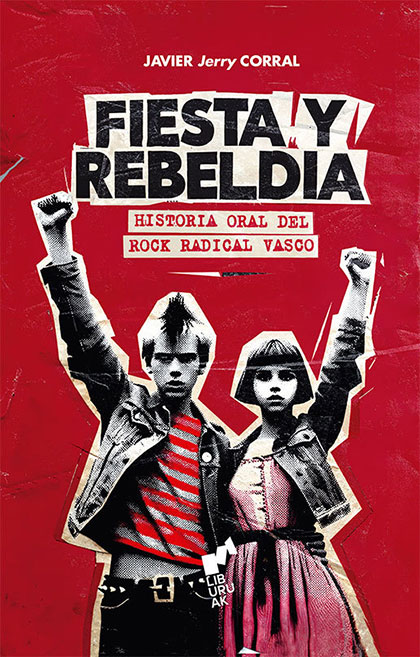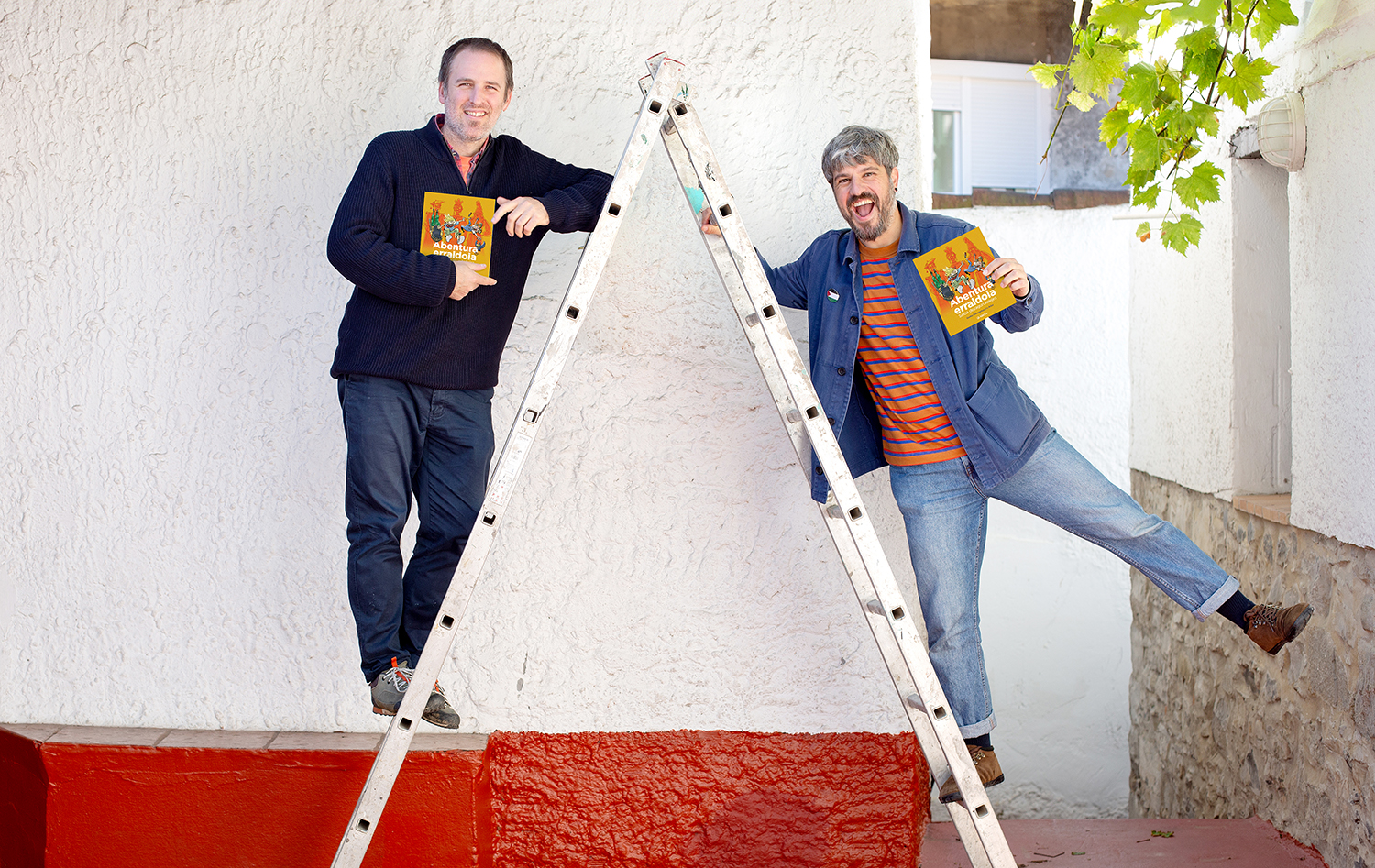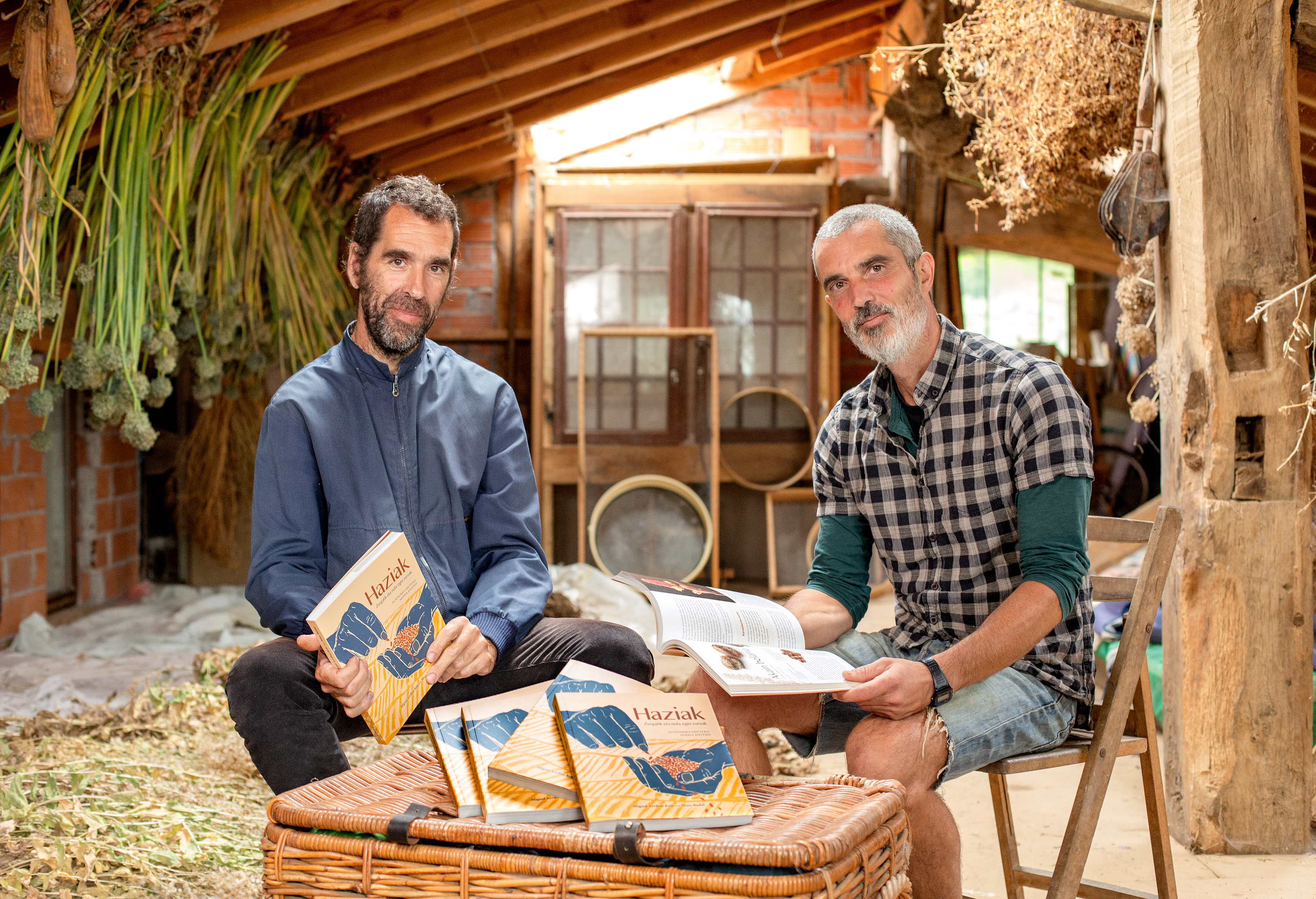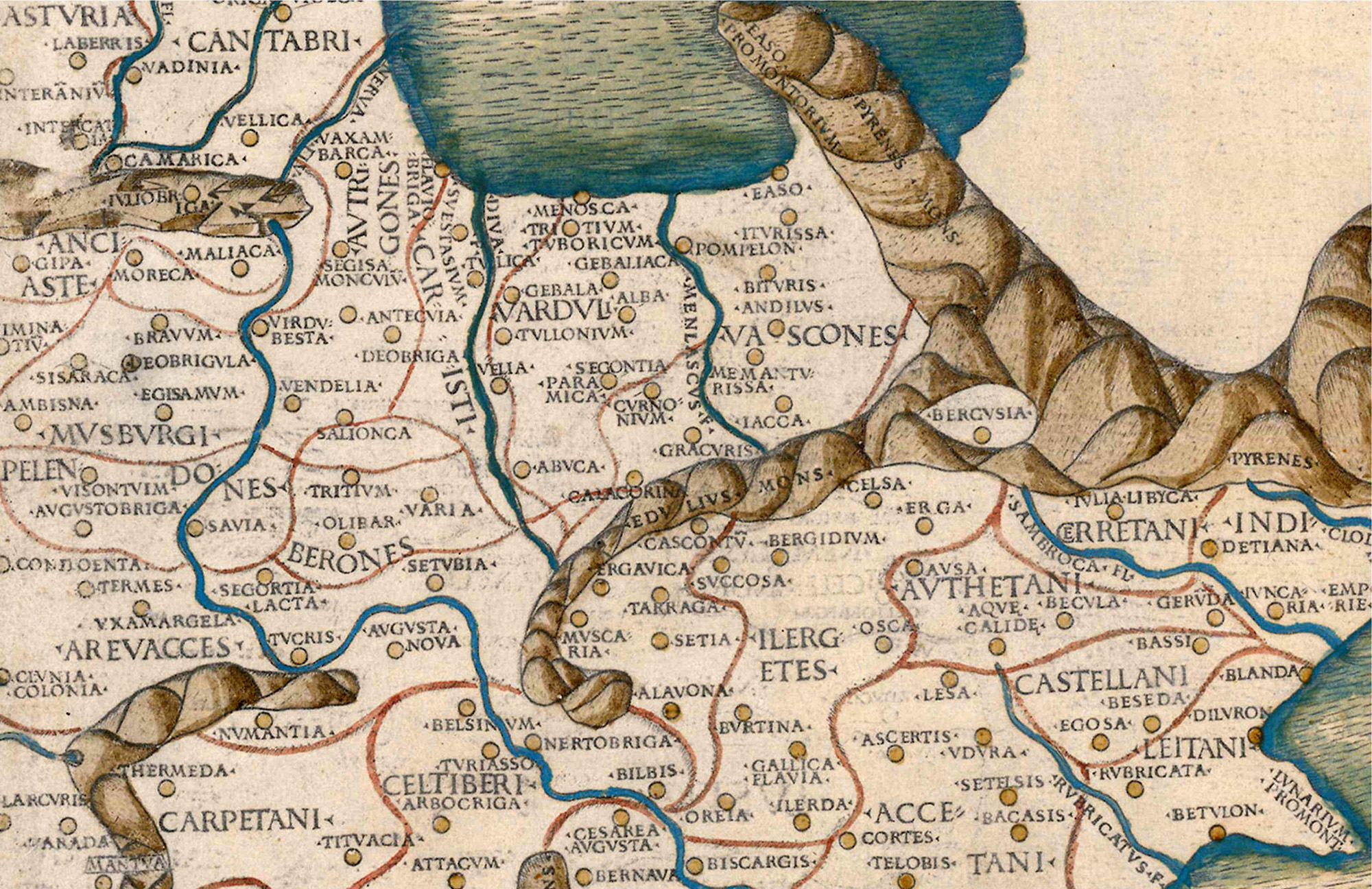"Society cannot be understood without that supernatural magical part of the human being"
- He published the Akelarre trial in 2021 and last year an orfebrile pearl: The three deaths of Elurzuri. He rewrote the famous tale of the Grimm brothers, starting with the oldest manuscript, traveling to ancient Greece and following in time some elements of the history of Elurzuri. Amazing magical journey...
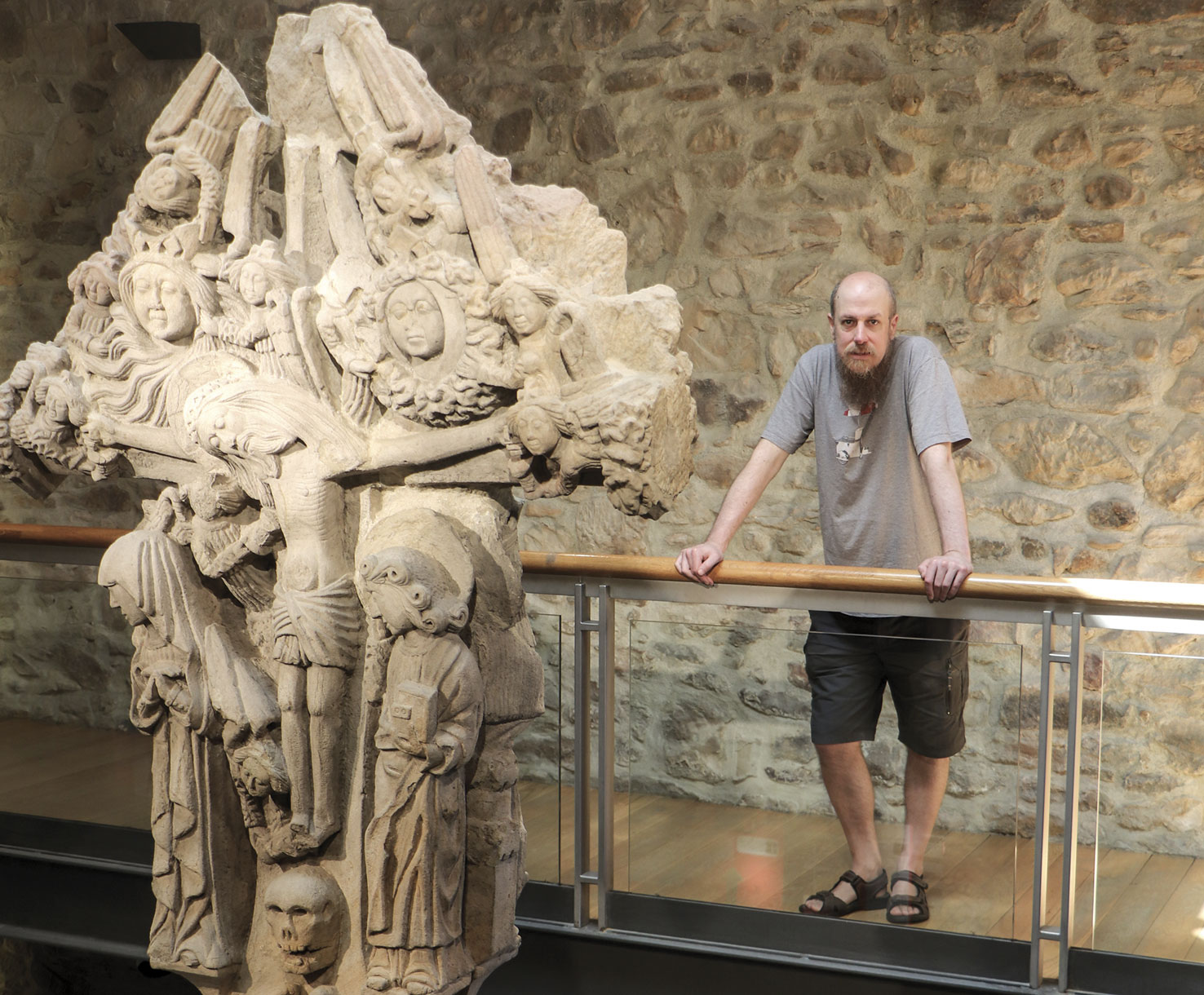
Ander Berrojalbiz Etxebarria (Durango, 1983)
Professor of Music History at the Conservatory Bartolomé Ertzilla de Durango, is violinist and founder of the Khantoria group. However, a research lover, dedicates several hours to reading historical documents, to research more by pulling them and to writing after cooking all in themselves. Here are some curious books published: [Ambotol's heretics]. 'Lutherans in the year 1500 (Pamiela, 2016), daughter of the Heretics (Pamiela, 2017), Akelarre. Nocturnal stories at the dawn of the great witch hunt (Pamiela, 2021) and the three deaths of Elurzuri last year, for example.
Beautiful book on the three deaths of Elurzuri and the daughter of her Heretics. A pleasure for the reader, who has not been one or the other.
Daughter of the heretics, it occurred to me that I was making another book, The heretics of Amboto: ‘Lutherans’ in 1500. I made some discoveries, and I thought I'd follow his track. While working at Akelarre, I came up with the idea of writing the three deaths of Elurzuri, pulling the poisoned apple yarn. So came the two books, following the data I was exposed when I was researching something else. But don’t think that every time I decide to investigate something comes the book! Sometimes yes, sometimes not, but in all cases I learn something I didn't know before.
Their work is perceived by the great work that needs to be done to perform small and beautiful work. Shows the tip of the iceberg...
It's possible. To write Akelarre, I read the processes and processes against witches, a lot of documents about magical beliefs, the Pyrenees, the Alps… Not everything that is related to the beginnings of the witchcraft processes, but most. And while I was reading there and here I came across an object or a piece of witchcraft: the apple. And then I started looking for the apple's footprint, and I realized that it has a big role in the Pyrenees. And I followed that apple.
Is the apple the protagonist?
No, not the most important part of the book, but the apple pointed to me the path of Elurzuri. The story we all know, but I remember coming to the library of Durango and I took an edition of Elurzuri's story: I started looking for the apple scene, I read it, but then I became interested in how the Grimm brothers actually wrote that scene and I saw that they were talking about a poisoned comb. I soon realized that what the Grimm brothers counted did not correspond to the logic of medieval magic and venom. I bet, saying, “That poisoned comb was not in history!”
XXI. In this 21st century society we have a part of our amputated character, as Octavio Paz said: we have lost magic, poetry and narrative.”
Why not?
Because comb is a magical element, and poison is an element added later by someone. And at the same time, I looked at the apple. In the version of the brothers Grimm Elurzuri eats apple, dies, puts him in a glass coffin, the prince appears, decides to take the coffin to his palace, stumbles the servants, Elurzuri gets the apple out of his throat and lives back to Elurzuri! And that process is also due to magic, not venom. “That also changed the Grimm brothers, that’s out of the logic of poison! I have to analyze this well!”
You started looking for the oldest version of Elurzuri's story...I wanted to look at the first version of the Grimm brothers
and in German. And when I was looking for that first version, I read that there was an older source, a manuscript. I was published in a book in Germany, but it was very expensive to ask and send from here, and I got it through a friend from there. He picked it up at home and the book got it the day they visited us. Read the version of the story of 1810 and there the comb, but without venom. In the 1812 version, the poisoned comb. On the other hand, I saw that the manuscript collects two variants of the happy ending, but in both, Elurzuri is summed up magically. The logic of the story worked well in the primitive version. Then I found out there was another older writing, the one of 1808, and I also searched for it.
.jpg)
Your job as detective.Hay to
look at each other and read a lot. For example, my first book was research on the heretics of Durango, the latest trial against the heretics of the town of 1500. I started by reading what was written at that time on the subject, and I realized that there were facts and sources that were not sufficiently studied. I read with suspicion almost everything, with suspicion and alert, I do not make passive reading... And while I was reading Durango's 1500 trial, I realized I had investigated.
And where did he do it then?It is
said that there was a 16th-century document about that judgment, but it didn't appear, and I started looking for the Harex. And talking to the Durango Archivist [José Ángel Orobiourrutia] -- with the one then, because we don't have archivists now, and that's also tremendous for anyone who wants to do research -- asking, looking there and here, and I finally found the document in a private library, which was in a book of old documents. The remains of that document led me to quote another document that I found at the National Library of Spain in Madrid. Detective work, yeah. It's very interesting, you know people, they help you and you find more things.
How much do you learn along the way?
A lot! You have to look for documentation and analyze it, then you have to write. For example, on the heretics of Durango, and on witchcraft, I wouldn't say I'm able to say everything by heart, but I do have many documents in mind. And then I just have to go to the mountain, walk, and my head starts to make connections, find ways to bring things together. But for that you have to have the material in your head. And coming from the mountain home, checking the documents and checking the idea or hypothesis or whatever. From the moment I have an idea to the moment I carry it out, it doesn't go long, but there's always the obsession, and there's the work, sometimes a lot of work and so on. I am a musician, both an interpreter and a professor, but not a writer. However, today everything in the world of culture, and nothing, is the trade: the book has been written, conferences and musical performances have been created, and courses… many things.
Why is heresy, the akelarre, the spell so strong?
I believe that attracting people on the margins is eternal. When I also knew that in Durango they were heretics, he wanted to know more. In recent decades, in addition to curiosity, the fashion associated with heresy, akelarre, witchcraft, etc., or something like that, has emerged, and this fashion is linked to different ideologies and social movements, especially feminism. Several books have been published on witchcraft and many have read. In Euskal Herria, on the contrary, I would say that this fashion is also linked to a certain nationalism.
"I would say that in recent decades a fashion associated with heresy, akelarre, witchcraft has also emerged..."
Zugarramurdi is always or almost always cited…
Not only Zugarramurdi. It is true that Alta Navarra is the territory where most cases of witchcraft have been preserved, but this does not mean that in the other territories there have been no cases of witchcraft. Little will be understood if we forget, for example, the Lower Navarre of the 14th century. We have documents from Nafarroa Garaia… According to some theories, the spell was an instrument to conquer Navarra, such as the Inquisition. I mean, that's where a speech came from, and today the publications have come, the fashion has come and the noise has come. However, I think there's a natural curiosity about the archetypes and stories that are on the edges, about magic and mystery, and on the other hand, we perceive a shortage, we think we've lost something that was ours. I'm not a believer, I don't have religious beliefs, but it's true that society cannot be understood without that supernatural magical part of the human being.
What are the discrepancies about the word akelarre? Mikel Azurmendi, Gustav Henningsen, you yourself...
There are many misunderstandings about the word. Mikel Azurmendi hypothesized that the word akelarre does not come from the aker, but from alquelarre... If I am not mistaken, doctor [Fermin] Irigarai stated that there was a toponym in the area of Zugarramurdi, called Alkelarre, related to herbaceous alca. From there, Azurmendi says that the Akelarre is an idea brought from outside, an erudite invention that was imposed with blood and fire – and this and that – to tread on the people… As I said before, these arguments are very attractive to some ideologies, very appropriate to show an oppressed people. The speech comes in wonder and the truth is that it has been very successful. In addition, Henningsen joined this speech. He assumed the hypothesis of Mikel Azurmendi, although with nuances, but the argument advanced.
.jpg)
And what do you say?
Between 1595 and 1610 there was a change. Something happened in Zugarramurdi, to give the name of akelarre to the rings of witches, to designate one of the places of the assemblies of witches to the very assembly of witches … Mikel Azurmendi and Henningsen see the matter clearly, but I do not. Henningsen situates change at this time, but, on the other hand, tells Mikel Azurmendi that it is not proven that the spell archetype is brought from outside, some elements perhaps yes, but others not. As I say, the story of that word is still not well done.
First, Mikel Azurmendi's theory has been distributed, it is said that the word is an invention, but that is not true, because the word
already existed, the concept is documented, both in Basque as acer-larrea, as in occitan and Catalan... It appears throughout the Pyrenees, toponym related to the location of the meetings of witches. And if we insist that the word akelarre is an invention, we lose all of the above. The concept is essential if we want to know what is behind the spell. What interests me most, however, is not the origin of the word akelarre, but the origin of the witch hunt. And there we find some myths, and one of them is the one that corresponds to acer-larrea. The found documents show that, before the demise of the spell, already in 1370, the word aker-larrea appears in the witchcraft processes.
What moves you to investigate these kinds of issues?
There is no nostalgia in my works, in this 20th-century society of our West, we have a part of our amputated character, as Octavio Paz said. We have lost magic, poetry and narrative… So what did I do with Elurzuri? I first thought about making a rehearsal book, but then I decided another one, keep telling the story and make a new version of Elurzuri's story. I am not going to say, no to defend, that my original version is – that makes no sense, has been dancing that story among us for centuries – you cannot say how it was first told. I wanted to tell a version that makes sense and needs to be known. And I wanted to show elements that for us are fictional, that once had another presence and a much more real weight in everyday life. And from there came the idea of intercalating sources with the thread of the story. And it was complicated. how to account for the sources without losing the thread of the story? I do not know if I have achieved it…
* * * * * * *
A happy ending
“And I saw that the Grimm brothers, in the version published in 1812, left out a small detail of three notes, because the dwarves make Elurzuri note three times: they have deceived him for the first time and saved him by the dwarfs, have deceived him for the second time and have saved him again. But in the old manuscript version, the dwarfs tell Elurzuri: ‘If you’re fooled for the third time, we won’t be able to help you, it will be definitive.’ And the Grimm brothers took it away, they preferred the happy ending, willingly.”
Infanticides
“Newborn children have always died, an unexplained phenomenon, and there is still no clear explanation: it is called sudden death, no more. It is not linked to the poor family or to the feeding of anyone. Thus, living beings needed explanation to explain the death of the child, or an explanation to be able to live with that death, and hence the accusation of those deaths to evil spirits or witches.”
Description
“In ancient times the existence of supernatural and demonic beings is counted, and, for example, the presence of women who can metamorphose to enter cracked houses is very early. In Western tradition, these myths are always present, and their objective is to explain that there are evil spirits that have the ability to enter the houses and to drown newborn children, absorbing blood... The explanation could also be used to kill unwanted or unable to grow children.”
LAST WORD
Honradez
“There are those who mean to tell documents what the documents do not say. In 1990, when Mikel Azurmendi claimed that the Akelarre is an invention, historians had published Aragonese and Catalan documents showing that the Akelarre was not an invention. You have to be honest. It is not enough to resort to two or three sources in the area to raise the story with paw.”
Party and recreation. Oral History of Rock Radical Vasco
Javier 'Jerry' Corral
Books, 2025
------------------------------------------------
Javier Corral ‘Jerry’ was a student of the first Journalism Promotion of the UPV, along with many other well-known names who have... [+]









